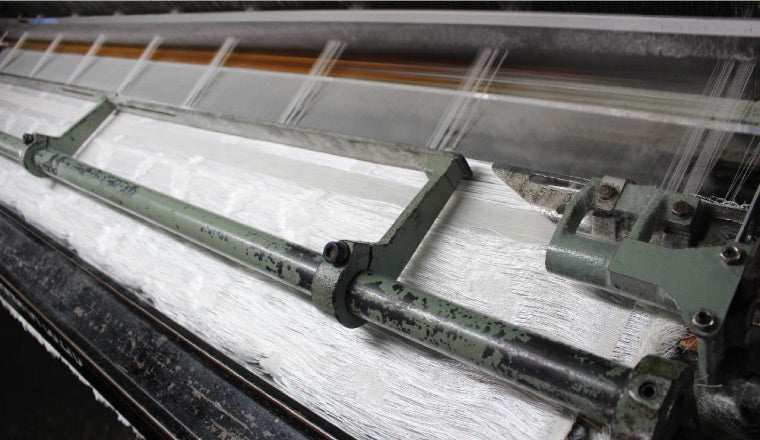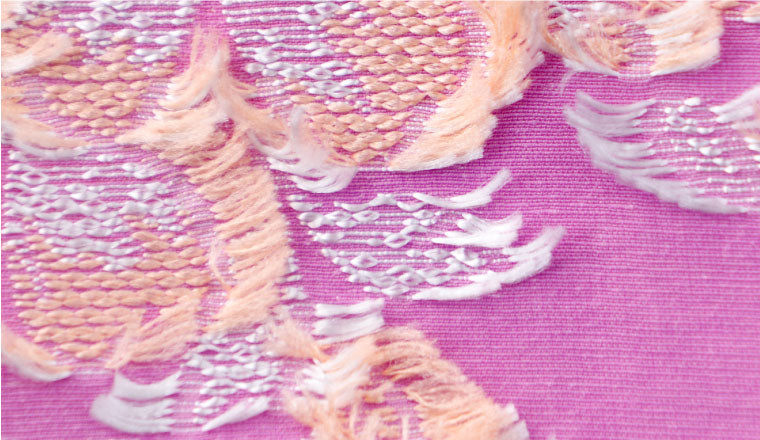
Jacquard
with a
hanging kneading technique
The dry-type Hatcho twisted yarn used for hanging kneading hand-cut Jacquard is a type of yarn that has been used for kimono textiles since ancient times, and its yarn twisting method is similar to the principle of rubber-powered model airplanes.
The method of twisting yarn is similar to the principle of rubber-powered model airplanes. By holding one end of the rubber at the rear of the model airplane and turning the propeller at the end by hand, strong twisting is applied to the rubber, and when the propeller is released, the recoil generates strong power to turn the propeller and make the airplane fly.
This principle can be used to create threads with strong repulsive force by applying twisting. The yarns are used as weft yarns to weave uneven Jacquard fabric on a computerized Jacquard loom. The floating yarns are then cut by machine, and furthermore, craftsmen cut the yarns by hand to create more delicate patterns.

The scouring process, in which impurities adhering to the raw material are removed and washed, is also done by hand. The hanging kneading* process, which is mainly used for silk, produces a texture with the natural fall of the raw yarn.
There are currently few companies that can use this method, and it can be said that this material is a unique Japanese traditional craft that is being passed down from generation to generation.
*A method in which cotton yarns are threaded into the selvage of a woven fabric that has been folded into a folding screen, hung from a pole or rod, and submerged in a scouring solution.






